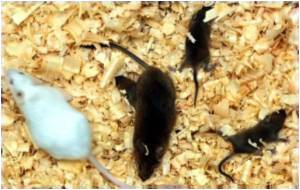
In a report in a recent issue of the journal Developmental Cell, Dr. Licia Selleri, associate professor of cell and developmental biology at Weill Cornell Medical College, and her co-authors report the first multigenic mouse model of cleft lip with or without cleft palate. The researchers uncovered the role of genes for Pbx (Pre-B Cell Leukemia Transcription Factor) proteins in coordinating cellular signaling behaviors crucial for the development of these abnormalities. They also discovered that altering one type of molecule within the Wnt signaling pathway (that comprises a network of proteins best known for their roles in embryogenesis) is sufficient to correct the defects.
Dr. Selleri has studied Pbx proteins for many years and has previously demonstrated their involvement in organ and skeletal development. In her latest study, she and her collaborators, including postdoctoral fellows Drs. Elisabetta Ferretti and Bingsi Li, tested whether these proteins also play a role in facial development by using mutant mice that lacked various combinations of three Pbx genes in the ectoderm, the embryonic cell layer that gives rise to the lip and nose.
The researchers found that only mutations affecting multiple Pbx genes resulted in complete cleft lip, with or without cleft palate, in all of the mouse embryos with these compound mutations. This finding differs from those of previous studies using other mammal models of these conditions, in which a mutation in a single gene produced defects in only some of the animals, Dr. Selleri says. The role of Pbx genes in the development of the shape of the face is a new and surprising finding, she adds.
Moreover, the mouse embryos with multiple Pbx mutations also had reduced or absent Wnt activity, which plays a prominent role in embryo development, within the ectoderm. Dr. Ferretti, the first author of this study, found that Pbx genes regulate a chain of signaling molecules implicated in cleft lip with or without cleft palate, including Wnt, fibroblast growth factors (FGFs), p63, and interferon regulatory factor 6 (Irf6) -- signaling pathways that exist across mammal species. Disturbances in this network lead to a decrease in programmed cell death, thereby interfering with the proper fusion of facial tissues and resulting in cleft lip.
When Dr. Li, the second author of this study, used genetic methods to restore Wnt activity in the ectoderm of mouse embryos with compound Pbx mutations, the cleft lips in all of these animals completely disappeared. "To my knowledge, this is the first time that anyone has corrected this defect in embryos, and we really show here that Wnt is a critical factor," Dr. Selleri says. "This is a very provocative result because it opens a completely new avenue of strategies for tissue repair."
Advertisement
Source-Eurekalert










